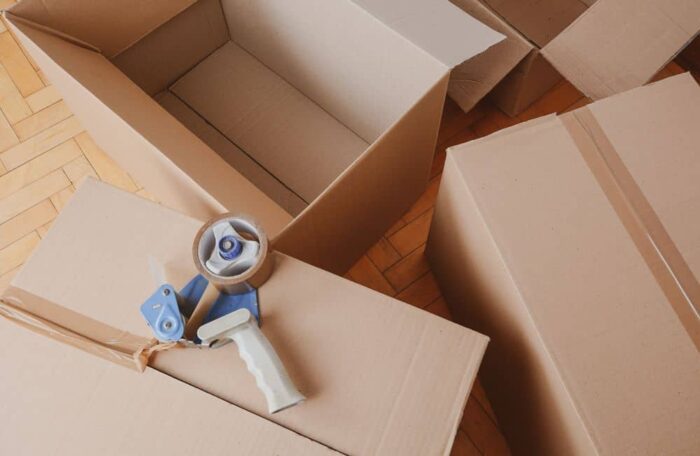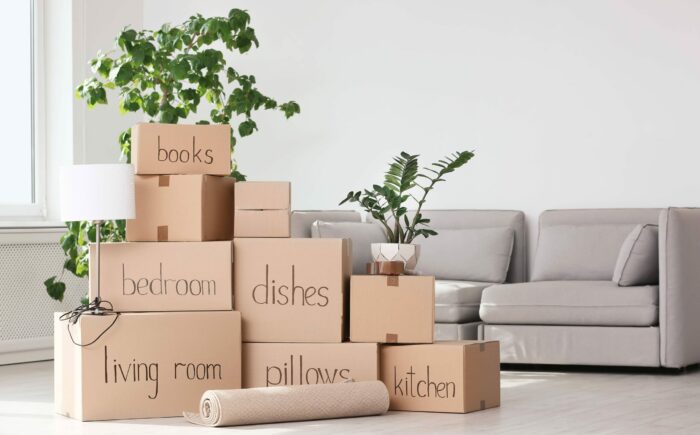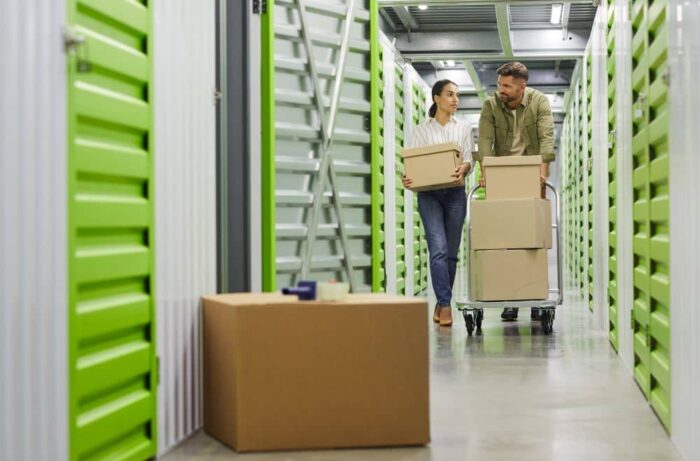Whether you are packing to move or place things in storage, it is a huge endeavour. It also requires care and some finesse if you want your belongings to be in one piece when it is time to unpack.
It is easy to become overwhelmed when you look at the contents of your home and realise you have to do something with all of it. Before you place a single dinner plate in a box, you need to have a plan and the supplies to carry it out.
Check out these helpful tips from the pros at Space Box:
1. Pre-Packing
Sorting – Go through your home room by room and decide what things are coming with you. Often those preparing to move have a knee jerk reaction and declare that everything is coming. If you are determined to hang on to all of your possessions, that is your choice. However, do you truly need those clothes from ten years ago?
A simple method to help you eliminate excess from your home is to make three sections:
- One is for things to keep that you will need to pack.
- A second section is for items to donate, sell or give to someone else.
- The third section is for things that will be thrown away.
In the long run, parting with some belongings can be the smartest choice. Some people resist parting with possessions. Others will skip this essential first step and then struggle with maintaining order throughout the latter stages of packing.
Supplies – Gathering everything you need to pack will streamline the process. There are quite a few things necessary for packing. When you buy the packing supplies, it is good to buy several of each item.

Here is a list of several vital supplies:
- Packing Tape
- Scissors
- Permanent Markers
- Labels
- Bubble Wrap
- Packing Peanuts or newspaper
- Dust Cloth cleaning while you pack, will save time when you unpack
- Trash Bags
- Rubber Bands useful for cords on electrical appliances
- Zipper Bags to hold miscellaneous items from junk drawers or small collectables
Boxes – Even though boxes are technically a packing supply, they are so important that they deserve their category. It is tempting to try and cut corners by using whatever boxes you can find. However, a flimsy box is not a substitute for a well-made box designed for moving.
What to look for in a moving box:
- Sturdy corrugated cardboard
- Clean if you are gathering used boxes be sure to check for pests that may be living in the boxes
- Small to medium-sized boxes are better than large boxes, especially if you are moving several heavy pieces
- In good condition
- Any appliance or electronic boxes that you have saved are the best way to pack these things
- Specialty boxes like wardrobe boxes are handy
How to Prepare a Box for Packing – Having your boxes ready ahead of time will make packing easier in the long run.
- If you have boxes that need assembly, follow the instructions, so you have sturdy boxes.
- Plastic covering on the inside of the box can protect your items from rain and minor dampness. This will not make the box waterproof, but it will provide some cover.
- Use padding on the bottom of the box. You can use bubble wrap or crumpled paper; another handy way to cushion the bottom of a box is to use towels or other linens. These items must be packed eventually, and they are helpful to protect the belongings going into the box.
Reinforcing Cardboard Boxes – If you have new boxes in good condition, you may not need to take the time to support them before filling. However, if your boxes are old or not specifically made for moving, you can save yourself aggravation by making sure the box will not collapse after you pack it.
- Add a layer of cardboard to the bottom of the box. Ideally, this will be a single piece of cardboard. Corrugated is best.
- Tape the inside seams and corners with professional packing tape. You can also tape the outside corners and seams for added reinforcement.
- Make cardboard inserts that run along the length of the box.
- Check for gaps where the box is glued and repair them.
2. Wrapping
Get your belongings ready for the move by wrapping them carefully. Several packing materials will protect your breakables. These include,
- Sheets of newspaper
- Bubble wrap
- Tissue paper
- Towels and other linens
For precious or highly delicate items, consider investing in specialty packing materials. Or take the time to give these items a few layers of wrapping and cushion them in the box with bubble wrap or other packing materials. Maintaining about five cm of packing materials is usually sufficient.
Transport clothing on hangers by gathering several pieces then placing a robe, jacket, or coat over them to make bundles. This will protect the individual garments and make moving them to a wardrobe or regular boxes manageable.
3. Filling the Boxes
Now that your boxes and belongings are ready, the filling will not be difficult.
Just keep in mind these points:
- Use small or medium boxes for heavy things like books or pots and pans. Do not create boxes that are too heavy for an average person to carry alone. A good rule is to keep box weight around 12 or 13 kg.
- When packing a box, put the heaviest pieces on the bottom.
- Make sure the box is filled. Use tissue paper, packing peanuts, or towels to fill in all the empty spaces. This protects the contents and keeps the box from collapsing.
- Large boxes are best for pillows, stuffed toys, and linens.
- Keep categories together to save time sorting later.
- After filling a box, tape it and label it right away. Moving can be chaotic, and you might not remember what box holds which items if you wait

4. Loading and Stacking the Boxes
- When the boxes are ready to load into a mobile storage container, make sure you place the heaviest pieces on the bottom of your stacks.
- Arrange your boxes like bricks to even the weight distribution.
- If you are unloading your boxes into a storage unit ensure there is not much if any room to move either side so the boxes are less likely to slide around.
- Place extra labels out as you go.
Bonus Tips to Make a Move Easier
- Make small boxes or bags for each family member
· Medicines
· Toothbrushes, toothpaste, and other toiletries
· Night clothes and clothes for the next day
· Electronic chargers
· Snacks and drinks
- If a family pet is part of the move, make sure you pack food, treats, medications, dishes, and toys separate from other items so you can find the necessities when you need them.
- Take advantage of extra space at the bottom of wardrobe boxes (porta robe boxes) to pack pillows, slippers, and other soft articles that will not crush clothing. Remember that wardrobe boxes are great for packing several bulky or awkward items.
Packing will always be a big job, but following our tips will make it a bit less difficult even if it is still a great deal of work.
